Marshmallow with 1 GB of RAM—Yes, You Can!
As I was writing two posts on the lack of attention to detail of some reviewers, I was actually exploring for a cheap smartphone. 34 months ago, I purchased a Huawei Ascend G700, which was quite a good choice for 200 €, but it was stuck to Android 4.2.1—and I also got annoyed with other issues. I wanted something new with Android Marshmallow, but for 200 € at the very most. I am not only a cheapskate, but I also believe it’s not worth paying more for a smartphone—and I mean paying the full price, not going for a carrier-sponsored device. Should I drop the phone under the bus or under the S-Bahn, or should I need (or want!) to change it more often than once in 2-3 years, I don’t want to pay much. Besides, I’m not a gamer, I don’t need idiotic features such as 4K screens or whatnot.
I also have some constraints. I’ll never purchase a phone that only supports nano-SIMs (see why at the end of this post), so many interestingly-priced devices are out of the question. I also said I’d rather avoid Samsung (I never liked the brand), but also LG (crappy customizations), Motorola (because it’s now owned by Lenovo, and no more Lenovo for me), ZTE (worse than Huawei, and probably no updates), no Asus (because), and… no more Huawei (they actually help me to avoid them by adopting nano-SIMs).
At some point, I was eyeing Acer’s Liquid Z630 and Z630s, but I eventually got put off by the limited maximum brightness of such devices—around 340-360 cd/m², whereas my G700 offered 560 cd/m². And, after all, while their 4000 mAh batteries offer a good runtime, it wasn’t as good as expected (once again, look here, under ❻). Oh, and the upgrade from Android 5.1 to 6.0 is highly questionable.
For some reason, I got this obsession with finding a Wiko smartphone—brand which is widely available in Germany, and which is generally more trustworthy than Archos—although I know they’re developed and manufactured in China, with only a few “French” touches. Their prices are very good, and their wide line of devices offers in theory quite a good choice. Some of their devices are quite good, some are less than mediocre—but even big brand such as LG make sometimes ridiculously-specced phones, such as using 5″ screens with only 480×854 pixels. And again, I need to be able to use micro-SIMs, and too many recent phones require nano-SIMs, which are never available with prepaid.
Looking at Wiko’s smartphones sur le site d’origine, and also filtering by Android version on Wiko Deutschland, I noticed that the choice is not that large—that is, if I want Marshmallow. Quite thin, actually. Disregarding Wiko U Feel (without “Lite”) for I don’t like its back cover (I don’t know it reacts to humidity, perspiration, oily fingerprints, etc.), the final choice has to be made between three models—all being reviewed in different places, with links scattered along the two posts linked to at the beginning of this post—and for which I summarized the pros and cons as follows:
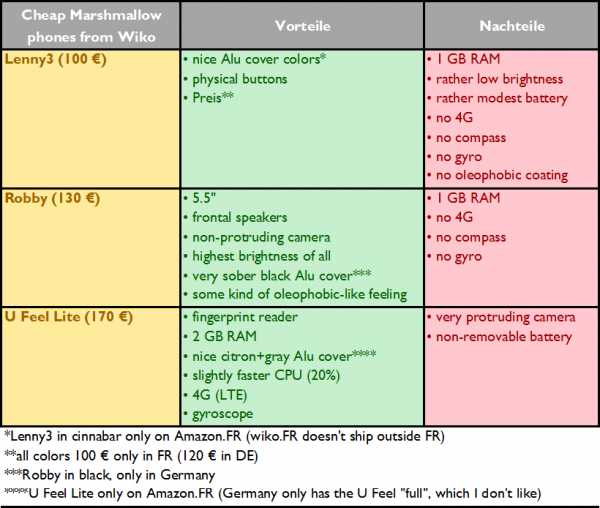
One small annoyance is that Wiko is using for some time already a “skinned” Android, not as “extreme” as MIUI, more à la Huawei’s EmotionUI. I normally hate that, but I wanted Wiko’s Marshmallow for a feature mentioned earlier: the ability to prevent some apps from starting, even on non-rooted phone, thanks to the Phone Assist system app. The same app by Wiko (or rather made by the Chinese) also restricts the apps that can issue notifications, and it also includes a 1-tap RAM cleaner (“One Clean”) that makes useless similar apps (the preinstalled Clean Master can be uninstalled).
All three devices are low-entry with regards to the CPU (Lenny3 and Robby are using MT6580M and the typical AnTuTu6 score is 25K; U Feel Lite is using MT6735, with a score of about 30K; note that the “next level,” MT6753, would only bring an increase to about 36K). 5″ or 5.5″, they all have a 720p screen, which is both the lowest limit I can accept, and a value that’s quite enough—I don’t need more. Their major limitation is however the 1 GB of RAM of the first two devices, and I tried to inquiry as much as I could on the “Marshmallow with 1 GB of RAM” topic.
I don’t remember why I didn’t opt for U Feel Lite. Oh, wait, it’s not available in Germany, where only U Feel “tout court” is offered, so I should have ordered it from Amazon France. And the too protruding back camera is a serious drawback in my eyes, no matter how good the build quality (have a look at this, this, this and this).
As it happens, something hastened my decision. I wanted to get rid of the Huawei thing and, after installing an unofficial MIUI7 build (that at least had 4.4.2 instead of 4.2.1, so it made it… Pokémon Go compatible, even without a gyroscope, hence no AR), I gave it “for adoption” (I actually asked a friend to put it on eBay.de). That happened last Friday, and I was left without a phone (short of using a phone that belongs to my wife, but it’s configured to read her e-mails and all).
In the need of deciding quickly on what to choose between Lenny3 and Robby, the challenges were more or less along these lines:
- 5″ (Lenny3) or 5.5″ (Robby)? It could have been either way. As I am using the phone also as an e-book reader, 5.5″ would help.
- Physical buttons (Lenny3) or on-screen ones (Robby)? Lenny3 is the only one to feature “classical” buttons, which I liked on my Huawei, and with the “correct” placement of back (leftmost). As not all apps can go “immersive”, the button bar takes screen space, and this sealed furthermore the fate of U Feel Lite: 5″ with on-screen buttons, that gives 4.65″ of always-usable screen estate. But I also thought I should eventually adapt to on-screen buttons, as sensor buttons will soon be dead and phones featuring them will be looked at with distrust.
- Higher brightness (Robby) or a modest one (Lenny3)? With a maximum brightness slightly higher than that of Acer Liquid Z630 and Z630s, or of Samsung Galaxy J5, Wiko Lenny3 is still borderline; if I’m not wrong, even the iPhone 3GS, with its atrocious low-res and its unbelievably low contrast (~160-170), has a slightly better brightness.
- How important to me are Robby’s unique assets: only front speakers, and no protruding camera? Quite important, usually.
- Do I need 4G, something that only U Feel Lite has? No, I fucking don’t. Maybe my Telekom contract includes 4G (I’m not sure), but what I need is a decent 3G speed, something like more than 10 Mbps. Not more than that, it’s a fucking phone, I don’t stream movies while downloading torrents on a bloody phone! As for prepaid SIMs, in Germany they’re assholes: the cheaper your prepaid option, the lower the speed, limited to either 7.2 Mbps or 14.4 Mbps. Not that their 50 Mbps LTE (150 Mbps is not for this country) would really be a true value. So go to hell with LTE (by the way, not using LTE might be good for your battery).
Then, another thing bothered me. If I wanted Lenny3, I should have ordered it from Amazon.fr, because its MSRP is 99.99 € in France and 119.99 € in Germany! 20 € for nothing (that’s 20%) is simply unacceptable. And the actual “street price” for Lenny3 in Germany starts at 119.99 €, for it’s a hot product as of yet. Robby, quant à lui, has a MSRP of 129.99 € in France and a “street price” (for online offers though) of 111 to 129.99 € in Germany (some colors can cost as much as 147 € for they’re still hard to find, but let’s ignore such shit). Notwithstanding the idiotic policy regarding the available colors (see ❽ here), Robby first showed up in Germany, not in France, and in the very color that is not available in France: black. Not gris asphalte, but true black.
So as I was examining the (meagre to non-existent) stocks and the delivery delays on various German online or brick-and-mortar stores, I noticed an extremely strange thing:
That’s right: should I wanted it delivered either to my home or to my local Saturn, I should have waited 3 weeks, but if I go to that very store, they have it in stock! Totally incomprehensible—they normally don’t move the merchandise between stores, so if they don’t have the product in a warehouse, it’s non-deliverable, but I expected them to say that I can order the product online with “delivery” and pick-up from my local store, because it’s physically fucking already there!
Either way, this required further investigation and a visit to the bloody Saturn.
As it turns out, they had 5 well-hidden Robby phones. None on display, nor—as they usually did with stocks that don’t sale, such as old Wiko Rainbow or Ridge 4G—with the box secured with a big anti-theft device, and left in free access so that people could pick it up from a heap of similar boxes. So I had to “hunt” a shop assistant, to tell her “Ihre Website sagt, Sie haben ein schwarzes Wiko Robby,” to have her look in her computer and here we go: the bitch unlocks a drawer, pulls out a box, wraps it tightly with an anti-theft device (the kind that uses wires in X so that it leaves some marks in the middle of the edges because of the too high pressure) and hands it to me with a sheet of paper that says I don’t want an extended warranty. Out to the cash register!
The big surprise—although it’s rather common with Saturn and MediaMarkt, I was forgetting that—is that the in-store price was higher than the price shown on their Web page and higher than what I thought to be the MSRP for Germany (maybe the thieves who sold the device online for 129.99 € and claimed “was 149.99 €” were right and the MSRP for Germany is higher?):
So I paid 139 €, but I’ll still refer to Wiko Robby as of “a 130 € smartphone,” or “a 129 € smartphone,” because this is what it is.
But these thieves are even more so, because there is no justification for them taking 9.01 € more than the online price: they didn’t bother to show the phone so that people could see it, try it, feel it; they didn’t even bother to make it available in the shelves; and for the effort of managing to get a slice of time of that stupid chick and to “extract from the secret drawer” my phone I’d say I should have been given a discount, not a surcharge! What was that old saying, Beware of Germans bearing smartphones as gifts, or what was it? (I can’t remember now.)
But I got a quick replacement, and I’m so far satisfied with my choice.
I don’t have a proper way to show photos of it, but some good quality ones can be found in some of the reviews—say here, here, and here. Here’s a few clumsy “preuves d’achat” though:
Gallery not found.I really don’t have a camera able to take good pictures at close range. And taking a good snapshot that includes the glossy screen is close to impossible.
Some general notes on the device now. As one owner noted, the first thing to do is a system update to the latest of Wiko’s specific builds of Marshmallow. I didn’t notice any slowness in the first minutes after the first post-upgrade boot, but it certainly did something in the background, as later I noticed that the battery fell from 100% to 90% quicker than expected. The back cover is indeed of aluminium, but only the main part—the back “sheet,” as the top and bottom stripes and the frame are of plastic—people should ignore this idiot who probably holds the phone with two hands, otherwise I can’t figure out how could both top and bottom plastic stripes be covered during a call. The reception and the call quality are good, and the phone is fully reversible, as designed: holding the phone rotated with 180 degrees enables the user to use the (normally) bottom speaker as earpiece and the second microphone placed near the (normally) top speaker. Despite what’s said here, the call quality was identical for both parts regardless of the phone’s position, so maybe the reviewed unit was defective.
Despite no official mention being made about that, the screen does include some oleophobic coating, as the fingers slide with ease on its surface and the fingerprints don’t stick. I know how it is to live with a simple glass with no such coating—my previous phones were this way, and I’ve used tons of wet Brillenputztücher to get get rid of the fingerprints. On the other hand, in lack of a patterned or granular back cover, this one is a fingerprint magnet. One can’t have them all… Oh, and there seems to be a tiny gap between the back cover and the battery, as it can be felt upon applying some pressure, but I suppose this is normal (I think I’ve seen it mentioned some part in a review).
It looks that the size of the device is not such a big problem, and neither is the on-screen button bar. The screen is surprisingly sharp for 720p on a 5.5″display, but I really can’t see what could be the benefits of more pixels.
The GPS has a modest accuracy: while on foot, sometimes it’s almost accurate (say, to 1-2 ft), but most of the time it can be off by something between 4 and 8 meters. That’s quite a lot, but note that, lacking a magnetometer (compass), Google Maps and the like can only use the GPS even to determine the North. It’s a reasonable compromise for this price tag. UPDATE: I don’t know whether this is because I used GPS Status & Toolbox to download “A-GPS XTRA Data” or because I went on streets that have a better view of the sky, but the GPS accuracy seems to have improved quite a lot. Using HERE WeGo, the shown position was always accurate down to the house number, and the sidewalk was the right one. Not bad.
How about the 1 GB RAM limit, or 960 MB to be accurate?
In short, I still have to find it an impediment in normal usage. And I’m not a gamer, remember? (BTW, I can’t use Pokémon Go with this device.)
Initially, I intended to use Wiko’s “My Launcher”, but what bothered me was the fact that it can only display 4 rows of icons, which is ridiculous for a screen of this size. I wanted my 5 rows back, so at some point I installed Nova Launcher (Prime). I hope I’ll stick to it, but for the time being TeslaUnread seems unable to display the unread count on the icons, despite being configured the way it was on my previous phone. Knowing that Marshmallow is very kinky about permissions, and that Phone Assist adds an extra layer of control, maybe I need to dig a little more.
About the storage space, out of the “nominal” 16 GB:
- Out of the box: 4.82 GB used, 11.18 GB free; and Clean Master can be uninstalled.
- After the update to build 25: 4.86 GB used, 11.14 GB free.
- After Google Apps update, plus replacing Clean Master with CM Lite: 10.4 GB free.
I then tried to assess the free RAM without installing Quick System Info PRO or the like. There are two ways: Clean Master shows the percentage of the occupied RAM (say, 55%); using it to clean the RAM would afterwards display the free RAM in MB; the second way is to clean the RAM using Wiko’s One Clean, which displays a a toast message the free RAM in MB. CM Lite is a better choice than Clean Master: not only it’s smaller, but it shows the exact amount of used RAM.
How much RAM is available, without forcing any special cleanup, but making sure there’s no app in the list of apps (right touch button), as opposed to afterwards? Sometimes, the same amount or a very similar one, which means that after all the apps have been killed by such a cleaner, none of them dared to automatically restart! (OK, that’s for the apps installed in the first day.)
- With Wiko’s launcher: 475 MB (Clean Master), 474 MB (One Clean); later 425 MB, 477 MB, 471 MB, 487 MB. It appears that the system is using a variable amount of RAM cache that can’t be cleared or that is only cleared by its own garbage collector.
- With Nova Launcher: 433 MB (CM Lite), 433 MB (One Clean); later 467 MB, 444 MB, 396 MB, 436 MB. It looks that Nova is a bit greedier.
- The available RAM with Facebook and the Twitter client active (and CM Lite also active): 342-359 MB. After a cleanup: 400-494 MB (One Clean).
- After a reboot: 434 MB free (shown by CM Lite), cleanable to 517 MB free (by One Clean).
- Long after a reboot, and after having used lots of apps: cleanable to a maximum of 424 MB free (by One Clean).
Actually, Phone Assist’s free memory gauge will only point to “Best” of at least 50% of the RAM is free (480 out of 960 MB), which is not always possible (CM and CM Lite show the used RAM):
Even when I sleep (see the values for the last 3 hours), the RAM is quite full, as the device checks 3 GMail accounts and 3 other IMAP accounts, the weather widget updates itself, and so on:
I’m pretty much happy with the setup though, and I can live satisfactorily with 1 GB of RAM. With the apps I’m normally using, I can’t see any significant delay while switching between apps or while launching another app—despite coming from a 2 GB device, but an older and slower one.
It’s now the proper time to introduce AnTuTu 6.1.4. I previously criticized this and this review for having borked the test and obtained scores well below the expected average of 25 KB (for this chipset and screen). Here you have the results of 3 consecutive runs—details will follow:
The first one (21475) was started with 490 MB free RAM. The second one (24770) was started after I made sure the screen won’t get locked and no kind of power saving would interfere. And the last one (25293) followed a fresh reboot (528 MB of free RAM).
I rest my case, this is a 25K device as far as AnTuTu is concerned.
Speaking of Marshmallow’s rigidity with regards to permissions, I’ve found that apps such as Droid Over Wifi can’t write on the SD card; this generally happens to older apps that didn’t get updated and don’t even know about the current philosophy regarding permissions. But the apps I really need do work as expected. And I even need somewhat fewer apps at that.
That’s because I really like the included File Manager. It can’t manipulate archives and it can’t do a lot of advanced things, but it indexes and it groups by category everything it finds, and it even includes a FTP server—just what I needed!
This Chinese phone creates (and it re-creates it if deleted) a folder “baidu” in the phone storage (with 3 tiny files that seem to contain a database of files): is this some sort of a Baidu File Manager? Because there’s absolutely no bloatware in this ROM. And this is going to be a smartphone I will not root, no matter what.
Speaking of storage, I found it strange that the SD card was mounted as /storage/9016-4EF8, whereas /sdcard was the main storage. That’s a bit strange.
I forgot to mention a bug in the included File Manager: should you install a SD card without having the File Manager started at least once, it will crash and you won’t be able to start it! The fix came to me as a divine inspiration: just go to the system settings, eject the SD card, launch the File Manager, then re-mount the SD card. From now on the File Manager will work flawless.
There are however two things that kind of disappointed me.
First thing, while Phone Assist says no app is allowed to autostart, SD Main Pro lists a number of apps that are designed to do just that (and I cannot alter the autostart receivers on a non-rooted device):
Truth be told, I’m almost sure these apps don’t start automatically, but should this be indeed so, Wiko’s patch simply “eats” their requests, without changing anything that could be seen by a “sysinfo” app. (Fearing this Boot Optimizer, I whitelisted the apps responsible for the weather widgets I’m using, and also TeslaUnread—not that the last one would actually work…)
The second annoyance is the new automatic brightness introduced with Android Lollipop—it’s only now that I learned of it, as I’m coming from Jelly Bean; users of some devices have first met this mechanism only in Marshmallow, as OEMs such as LG and Samsung were hesitant to adopt it in Lollipop.
In short, the “classic” way was to have two straightforward modes:
- Fully automatic, in theory with brightness going from minimum to 100% (in practice, most devices limited the maximum brightness in AUTO to something like 70-80%; should the user really want 100%, they needed to switch to MANUAL).
- Manual, which means the brightness always has a fixed value, as set by the user.
Today, things are confusing and messy in Android:
- The brightness slider can be adjusted in both AUTO and MANUAL modes.
- The AUTO mode only adjusts the brightness with ±10-20% (the value is not specified) around the value manually fixed the user… while in the AUTO mode.
- The value fixed by the user in MANUAL is different than the one from the AUTO mode, and it remains fixed.
- Settings now include a switch “Adaptive brightness” that actually enables AUTO, but now AUTO is not automatic anymore, it’s more like “let’s slightly adjust it around a fixed value”!
Believe me, in practice it’s terribly confusing, and I’m not the only one to believe that: Auto-brightness now sucks; Auto-Brightness Is Gone, “Adaptive Brightness” Takes Its Place (reader comment: “I like the adaptive brightness while I’m indoors, but I NEED full 100% brightness while I’m outdoors.”); What happened to Auto Brightness with the Marshmallow update? (“I just want “set it and forget it” Automatic (0-100%) brightness like it used to be.”). Well, at least we cannot blame Microsoft for that… nor can we blame the European Union, Angela Merkel, ISIS, Boris Johnson and the Brexit, or Marine Le Pen, right?
Moving on, let’s get to the battery. A German guy found that an hour of YouTube streaming over Wi-Fi (average brightness) takes 12% of the battery; in my case, an hour of MP4 playing from a local file (average brightness) took 9% of the battery. But I have Wi-Fi always enabled, just for the record. A French guy found that on all recent Wiko devices that run Marshmallow (he didn’t test Robby, but he tested U Feel, U Feel Lite, and Lenny3), an hour of video playing with VLC “ate” 22-24% of the battery—well, screw VLC, you Dummkopf! You don’t even know how to properly conduct a test!
The first two phone charges are not relevant for the battery runtime, as I am not yet in a “standard” usage pattern—I’m still experimenting. And, for the most part, I inadvertently kept the device set to a higher brightness than intended—either on AUTO or on MANUAL—as the new way this works confused me. But at least I really liked the quality of the image and, obviously, the brightness.
I can’t estimate the average runtime for a typical usage, but I’m satisfied with what I saw so far. I’d say it should be able to survive a typical day without a doubt.
A bit about the audio playing now. One more idiot to ignore: how on Earth was he unable to play MP3s no matter what he tried? Once again, maybe he was using old apps, unable to cope with Marshmallow granular rights, or maybe he denied those rights when asked! I installed jetAudio and it just worked!
That brings me to the topic of “3D Sound by Auro-3D,” so much criticized everywhere. Well, they’re mostly right, but this is only because I hate all the artificial effects added on music. Whoever wants to try this music “enhancer” should first try to switch from “Music – Normal Height – Front Emphasis” to “Movie – Normal Height”—this way the abomination is very much diminished. As for the so-called Compressor, my feeling is that it’s actually an expander…
What’s left? Oh, the camera! The main camera, as I couldn’t care less about the selfie one. Nothing spectacular, as expected, but passable nonetheless. The house at number 23 is the local brothel:
Gallery not found.The last 3 photos have a story. When I discussed the interpolated camera resolutions and the interpolation artifacts, I stated that switching the resolution from 13MP to 8MP or from 8MP to 5MP should get rid of the interpolation artifacts and only show a sensor’s noise. Here’s a zoom on a cropped portion of the last three photos:
The first one is taken at 8MP. The automatic settings and the light resulted in 1/1067 s and ISO-128.
The second one is taken at 5MP. The automatic settings and the light resulted in 1/200 s and ISO-130.
The third one is also taken at 5MP, but the ISO has been forced to 100, in an attempt to further minimize the noise by triggering a longer exposure time. The opposite result was obtained: 1/626 s. It looks like I don’t understand how this “simulated ISO” works in digital cameras: I thought a lower “film sensitivity” means the signal from the sensor is less amplified, so that a longer exposure is needed; but their logic is different.
Either way, the image is smoother on 5MP photos, which makes me think that the sensor has been designed for 5MP, and that the chip only delivers 8MP because it’s asked to do so, but the constructed image is interpolated. The 8MP photo even managed to get a better sunlight, yet those artifacts are only too visible. I’m not sure this is the case of an interpolated 8MP image, but even if only generated by noise, the artifacts are ugly. (See, this is why I loved the photos made on film: no matter the granularity of the film, when the image was zoomed in order to impress a photographic paper, anything could have happened, except this kind of artifacts!) But maybe the sensor is simply too small (1.12μm is not enough for a reliable pixel) and the black current too high.
But I’m not very happy with this sensor: even 5MP photos have a peculiar granularity that’s so very different from a photographic film’s one!
Oh, and this camera is definitely not suitable for macro photography. My Huawei’s crappy camera was a marvel when it was about macro (and this is a common phenomenon with some cheap Chinese phones), but Wiko Robby has difficulties in focusing too close, and I had to struggle quite a lot to be able to take these pics (which was a bit of a surprise to me, as taking close shots of some boxes in a shelf at REWE was painless):
Gallery not found.To sum it up: all in all, this is a good value for 130 €, and Marshmallow can run just fine with only 1 GB of RAM, provided you’re not a gamer and you don’t want (need?) to keep many apps open in the background, “for a quicker access.” To me, the “16 GB” of internal storage (as opposed to “8 GB” that can mean as low as 2.6 GB with updated Google apps, as it’s the case with the unfortunate Wileyfox Spark) are more important than 2-3 GB of RAM, as I don’t want the SD card to be an “adoptable storage” (this would slow down the device, and note that the internal storage is quite fast with its speeds of 134 MB/s in read and 51 MB/s in write). What the Germans call it, “a smartphone for beginners” (ein Einsteigerhandy), is a bit insolent: what’s their definition of a beginner? Since when not “needing” a 800 € smartphone is a sin?
Bottom line: It was a good choice. Now I understand why so many people (with the exception of a few idiots who couldn’t find their own image in a mirror) are happy with modestly-priced devices, as long as they’re not much worse than this one. I like what I call “minimalism” (I’m a Luddite, remember?), which translates in maximizing the value for the money with the “money” component in the lower range.
Now, let’s hope I won’t drop it on the asphalt while struggling with its larger size…
PS: Und das ist eine passende TPU-Schutzhülle (4.99 €).
AUGUST 29 UPDATE:
Please read the follow-ups to this post:
In brief, although I like the phone, there are a couple of severe issues with it, and they’re introduced by Wiko’s own “optimization” layer that “tries too hard.”
The most severe issue is that, no matter what you do, no widgets will update, except for the preinstalled widgets. For weather, I suggest Google News & Weather, as it’s better than My Launcher’s Clock & Weather, which is based on Accuweather. The only way a widget would update is when both the following conditions are met:
- The corresponding app is whitelisted in more than one place: “Not optimized” in Android’s battery optimization settings and whitelisted in Phone Assist’s Power Saver, Advanced settings & tips, wheel icon, White-list apps background.
- The corresponding app is open and running in the background!
This means you’ll have to refrain from killing all apps via the Recent Apps button, via Phone Assist or One Clean, via Clean Master, etc. But this is so unpractical that you’d rather avoid using non-system widgets.
The second-worse issue is that, at random moments, it’s possible that the auto-sync disables itself for all e-mail accounts at random moments, even if no optimization button is touched on Phone Assist! This doesn’t always happen, so I simply don’t understand the issue. The workaround is to check daily under Settings, Accounts, top-right menu, that auto-sync is still enabled.
A couple of notes concerning the 1 GB RAM aspect. Firstly, I’ll repeat that Phone Assist, One Clean, and Clean Master are useless, for the following reasons:
- Killing the apps with UI can be done via the Recent Apps button.
- Killing the apps without UI (services or system apps) with One Clean or other means has only a temporary effect, as some such apps will restart in the next seconds anyway.
- Making free RAM this way is 100% pointless, because Android will kill and discard background apps when a foreground app needs more RAM anyway!
- Because of RAM caching, the actual amount of RAM available to new apps is larger than shown (see below).
Secondly, 1 GB of RAM should be quite enough–Marshmallow knows how to use it, and Wiko is stupid by over-trying. Because of RAM caching, the free RAM reported by Phone Assist (the app or One Clean) or by Clean Master is not the real value. Consider these screenshots from Developer options, Running services (once you enable Developer options):
The first screenshot will surprise you. Wow, 619 MB of free RAM? Yes, because it only counts the running apps and services, not the cached ones that can be quickly discarded by Android! By tapping on “Show cached processes” you’ll get the 2nd screen, with “Show running services in the corner”: this one only shows 470 MB of free RAM, because here the cached processes are also counted. So all the RAM cleaners are useless as long as they don’t empty the RAM cache! Only Android itself empties this RAM cache, when an app asks for more RAM than what’s available.
One of the most surprising bugs introduced by Wiko is that their launcher, My Launcher, is kept as a cached process while in the background, even though keeping it active would only reduce the “maximum free” from e.g. 619 MB to 530 MB of RAM. For fuck’s sake, 500 MB of “available” RAM should suffice to any decent app! (To clarify: all the cached processes can be killed at any time; running processes are only killed either when the system “optimizes” them, or as a last resort when more RAM is needed, but only if they’re not critical services.)
Keeping My Launcher active in the background instead of cached would prevent the annoying 1-2 second delay often encountered when going back from an app to the home screen.
Definitely, Wiko (Tinno Mobile, actually) doesn’t know how to make their smartphones react better–they simply sabotage their own products through poor software options!
IMPORTANT! Update V.37 (received by me on Jan. 18, 2017), which is not a security update, fixed the widgets on Wiko ROBBY with regards to the general functionality: in previous versions (including V.32), most non-system widgets were simply not working at all (e.g. widgets for Twitter or for various news sources wouldn’t display anything), but now they work!
Still, a few widgets wouldn’t update at all, but it might be their fault. The general rule is that if a widget has a “button” or otherwise a way to update itself on touch, then it can be updated manually.
Also, background apps can still be terminated after some time for no obvious reason (at least on the “normal” ROBBY with 1GB of RAM, not on the Thai edition), despite having them whitelisted and not “optimized” in terms of battery, even those apps who add ongoing notifications supposed to keep them alive.
Nonetheless, since update V.37, ROBBY is at least almost fully usable in terms of widgets. I expect to find a similar progress with V.50 (to replace V.45) in LENNY3.

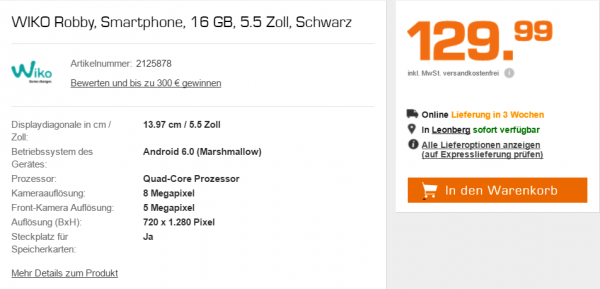
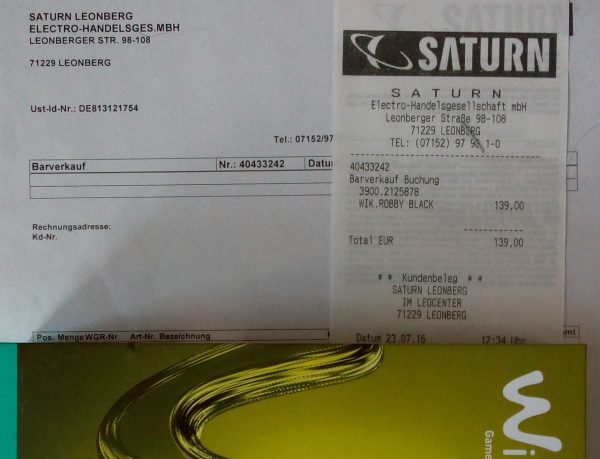
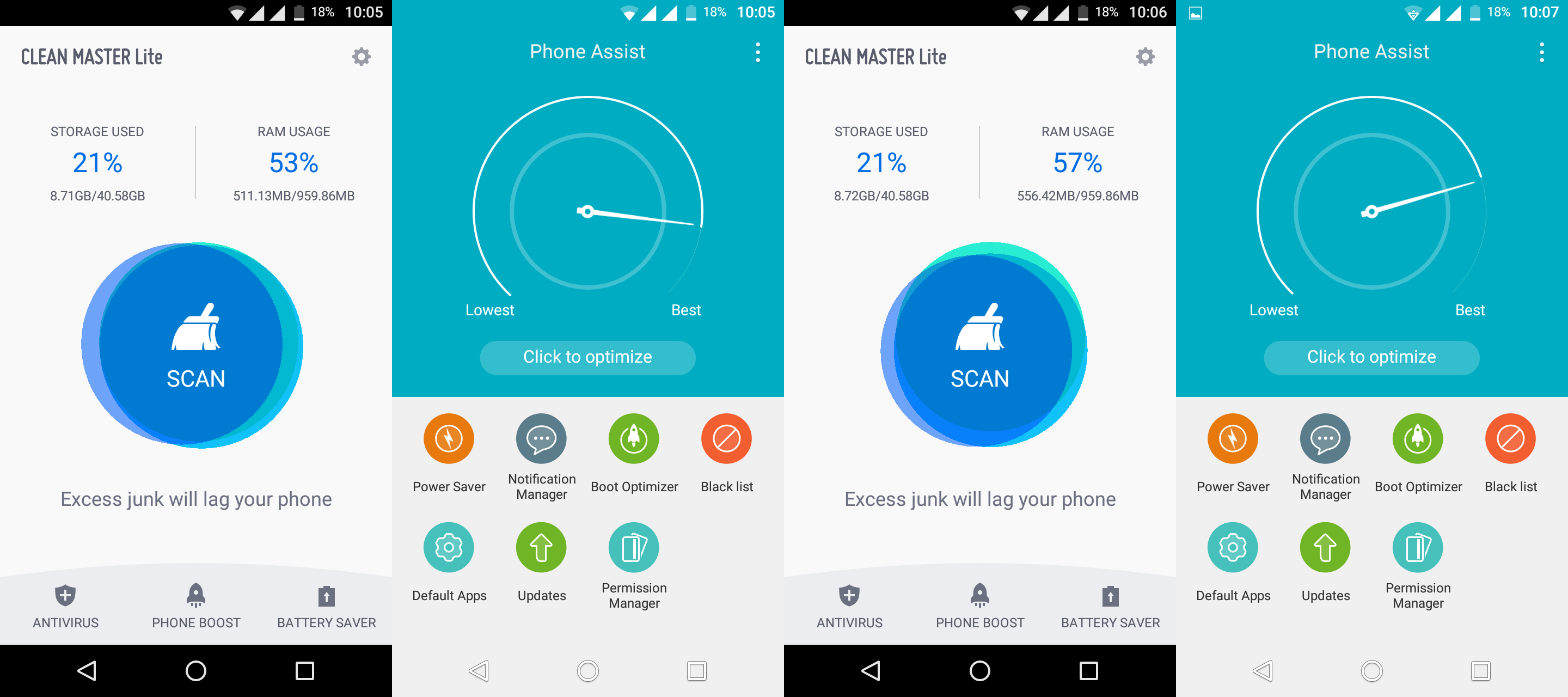
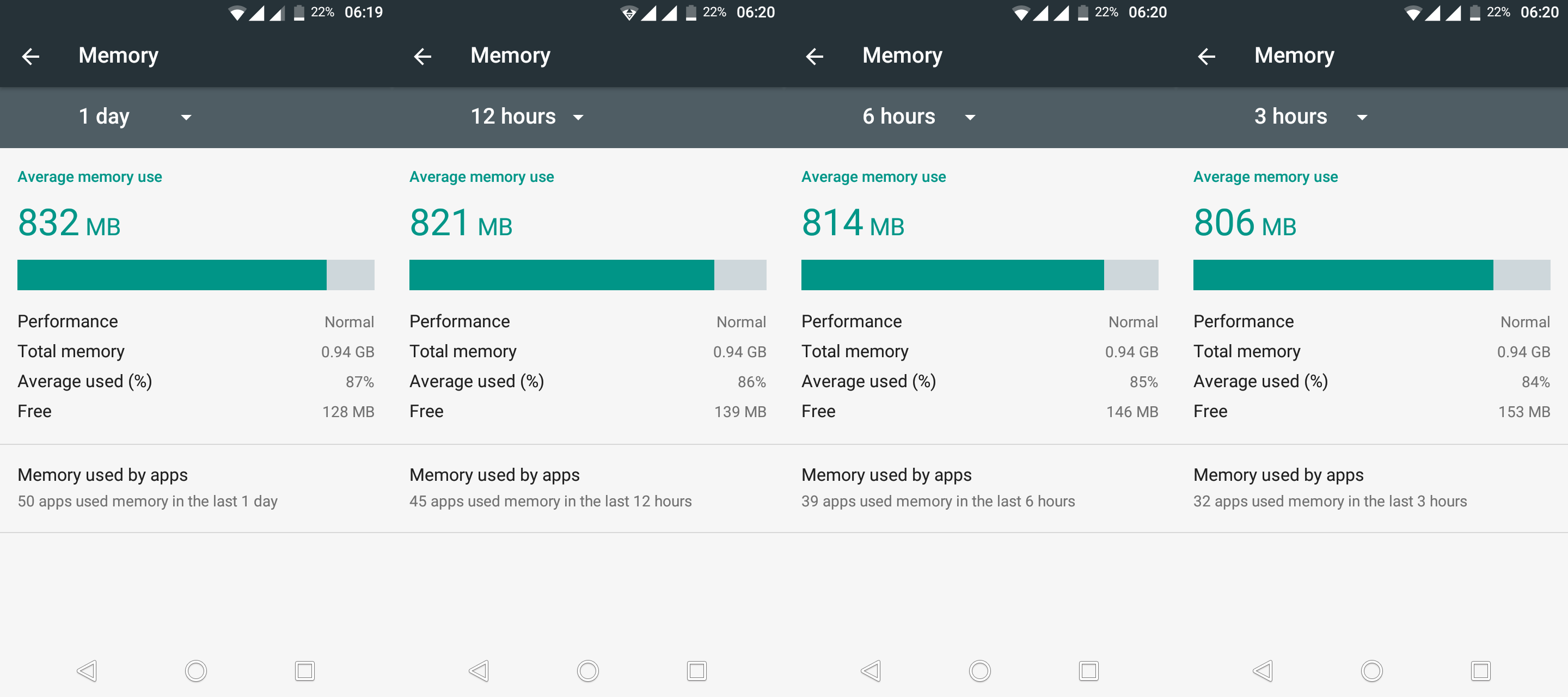
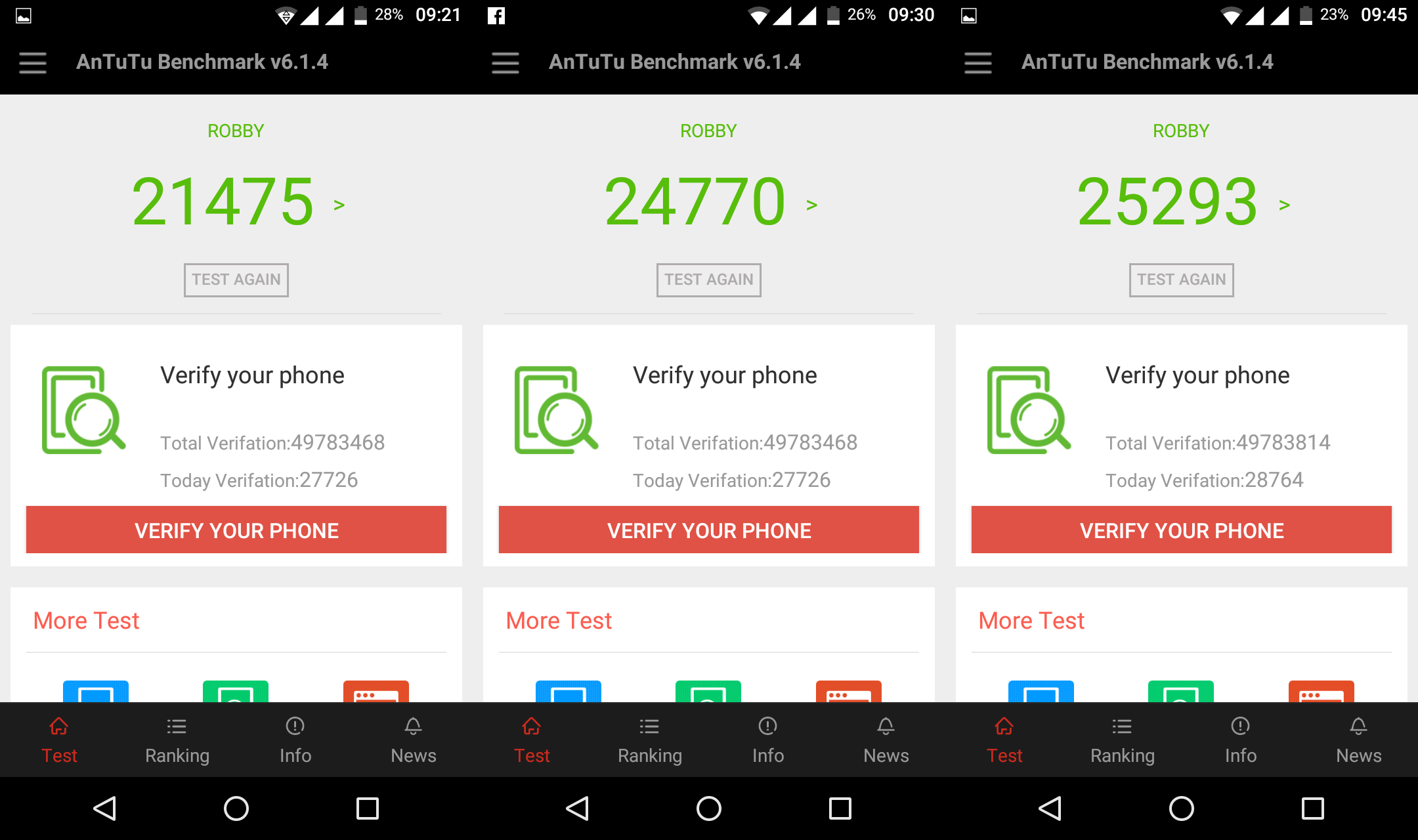
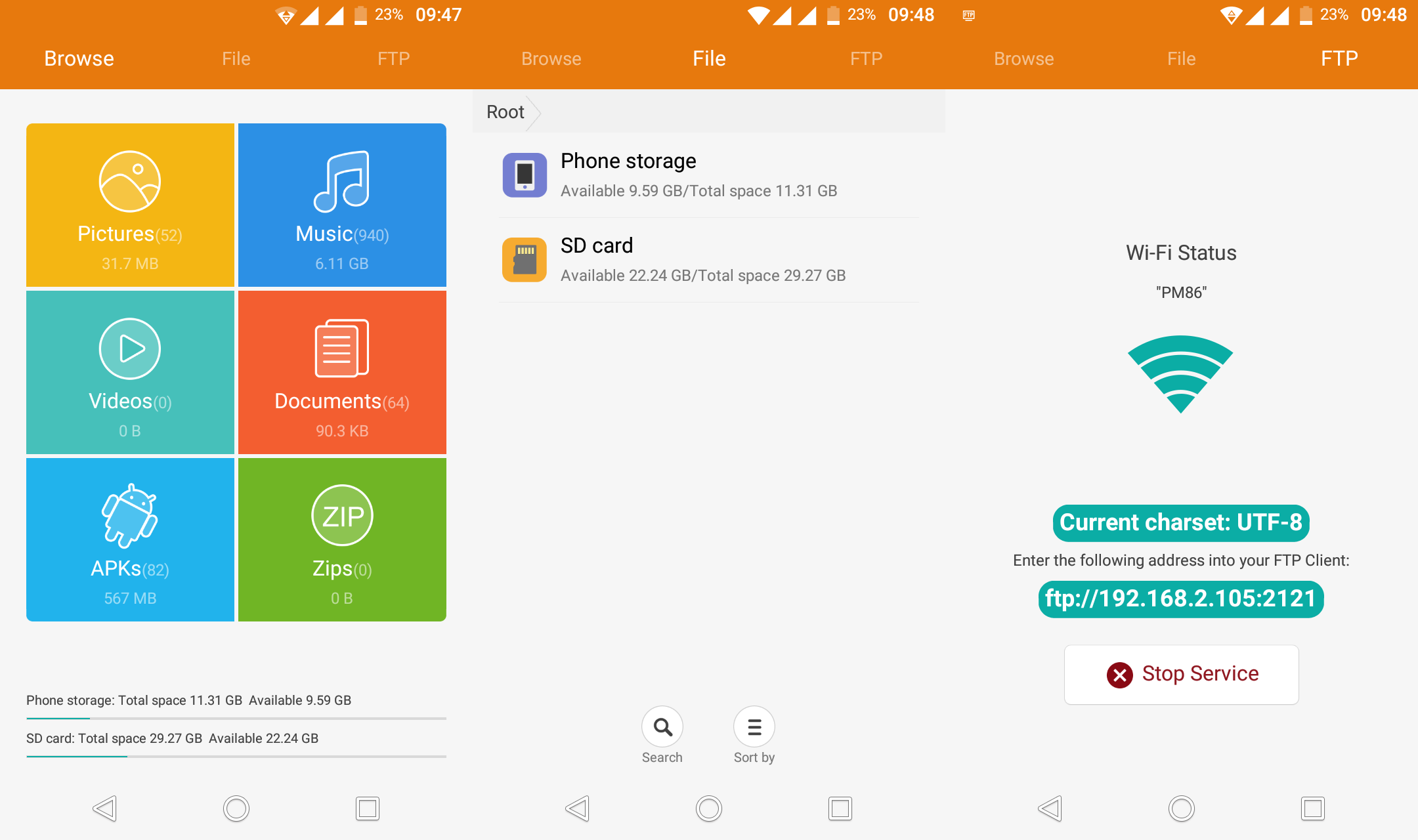
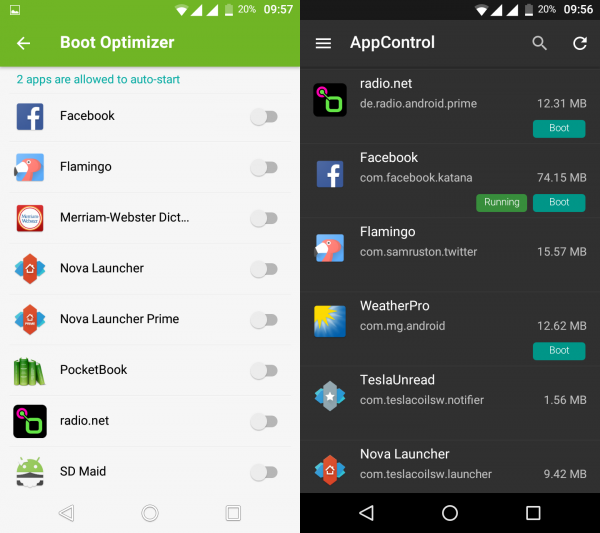
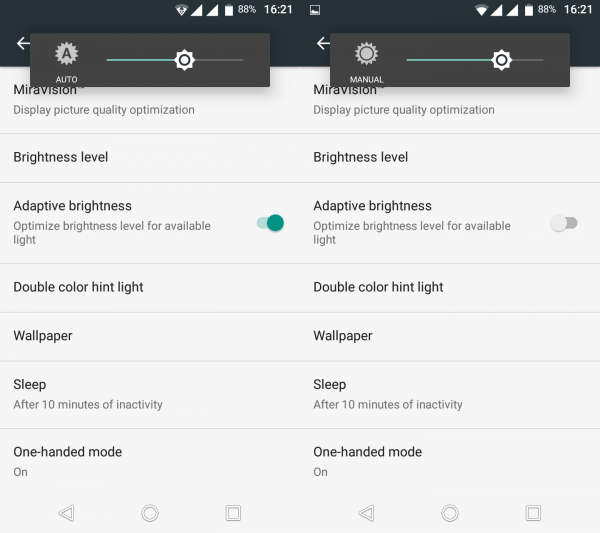

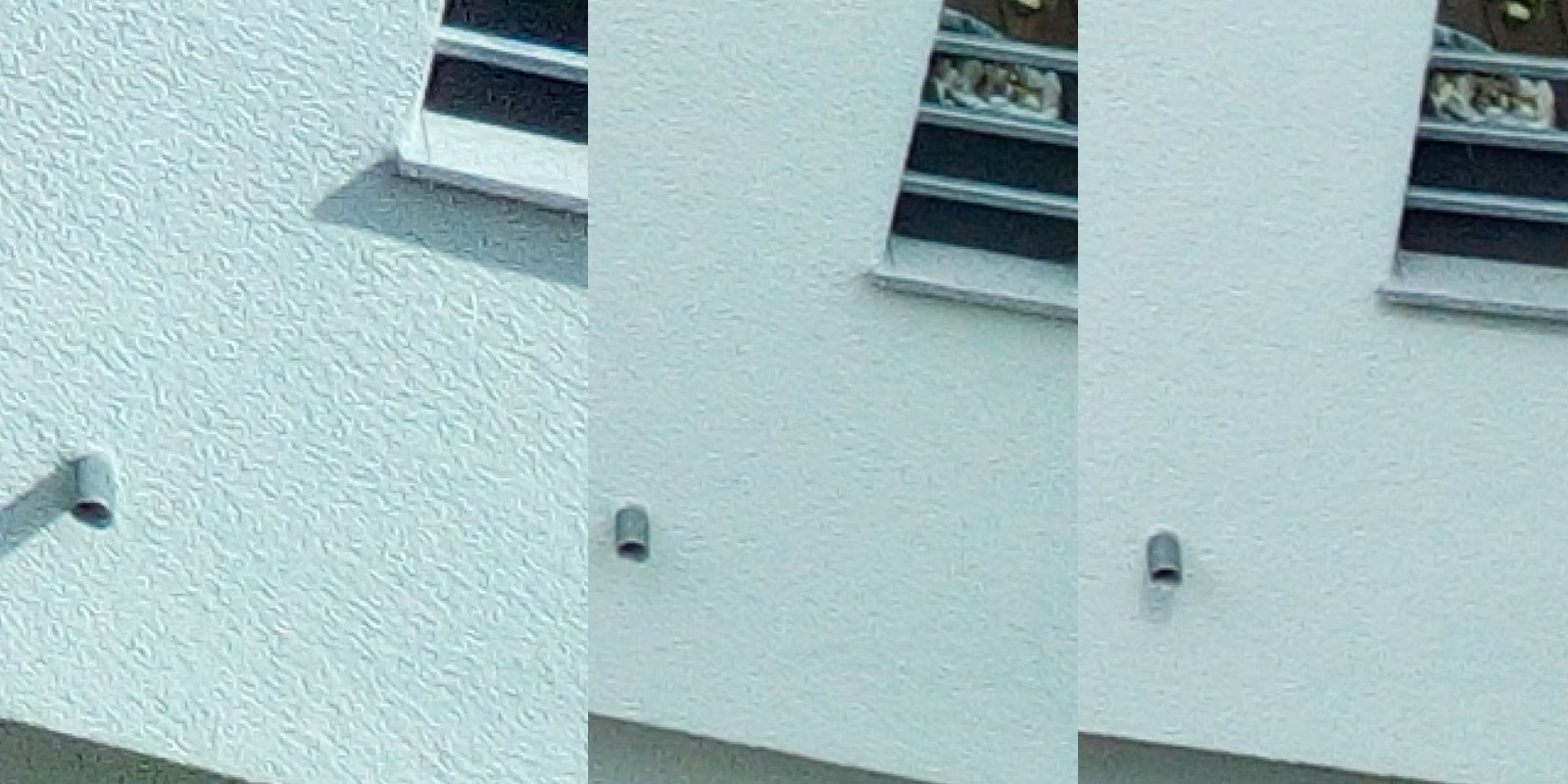


N-am citit inca articolul, dar am o recomandare daca vrei value for money. Xiaomi e numele ei. Niste chinezi atipici, pun hardware excelent pe telefoane si cer preturi derizorii. Frate-miu poseda un Redmi Note 3 PRO (de fapt e Redmi Note 3 varianta cu Snapdragon, prostii de romani i-au zis PRO), luat cu 780 de lei de pe Quickmobile. Telefonul e fabulos pentru banii aia. Aproape 80 000 in AnTuTu, aproape de nivelul flagship-urilor din 2015. Snapragon 650 e o bestie hexacore, gratie celor doua Cortex-uri A72, bate la fund 808-ul de pe LG G4, ba chiar si 810-le in multe privinte. Vine la pachet cu Adreno 510, asta in timp ce Olviu/Gionee inca pune Mali T720 pe telefoane de 1800 de lei. Mai adaugam si camera decenta (nu extraordinara) de 16, senzorul de amprente foarte rapid, printre cele mai rapide pe care le-am incercat, slot-ul pentru card, LTE de categoria 7, filmarea 4k, look-ul premium etc. La 800 de lei nu gasesti nimic similar (a scazut la 160 de dolari varianta cu 2gb RAM si 180 cea cu 3). Singurul motiv pentru care am amanat sa-mi iau e ca se lanseaza asta: http://www.cnet.com/products/xiaomi-redmi-pro/
Cunosc modelele Xiaomi, ca și alte chinezării, de peste 3 ani, dar nu mă mai interesează „self-import”-ul, discuția cu DHL/Vamă/TVA, și nici nu-mi asum riscul unui DoA sau în genere a unui device sosit cu probleme. Am vrut un telefon care să se găsească oficial în Europa și, în afară de Marshmallow, cum nu mai vreau să root-ez Androizi, a vrut să văd ce-mi aduce suplimentar controlul apps în privința Boot și Notifications oferit de Phone Assist de la Wiko.
N-am ce face cu 80K în AnTuTu, și nu vreau Snapdragoane din seria celor care se încing și consumă și bateria. Mă lasă rece șo Mali-urie mai noi, căci NU JOC JOCURI DINTR-ALEA, așa că pur și simplu nu am nevoie. Filmarea 4K să și-o bage în cur: ce să fac cu ea, s-o afișez pe plasma pe care nu o am? La fel și cu LTE: mie-mi ajung și cei 16 Mbps pe care-i am acasă, pe laptop(uri), pe sârmă, ce dracu să fac cu LTE?
A, și nu are Marshmallow, domnul Xiaomi Redmi Note 3. Iar butonul de Back e în dreapta, eu îl vreau în stânga. Ghinion. Poate să aibă dotări dumnezeiești.
În fine, aș găsi și cu shipping din Europa, dar la 210-220 €, varianta „Pro” cu 2 GB. Dar chiar nu mă interesează. Device-uri care vor muri cu Android 5.1.1 mai găseam și altele.
Acum câțiva ani eram fan chinezării, chiar și Huawei G700 mi l-am luat din China (G700-U00, nu -U10/U20, cum e în Europa, dar are toate frecvențele GSM și 3G) la vremea lui, dar nu mai am chef de așa ceva.
A, iar minunăția aia care se lansează, cu cei 8 GB de RAM ai săi, cred că va mânca bateria pe pâine.
Uitam: MIUI vine cu un maldăr de căcat, și fără Google Play, deci trebuie root ș.a.m.d. M-am săturat de de-alde astea. Chiar și dezinstalând apps chinezești, tot rămân urme dubioase în mai toate ROM-urile chinezești peste care am dat. Ăsta de la Wiko e curat, cu o foarte mică excepție nesemnificativă.
There is something terribly wrong with country-specific prices in Europe. And a common currency only makes it even more obvious. E.g.:
Spain
https://www.bq.com/es/aquaris-m5-5
239,90€ (720p edition)
259,90€ (FHD edition, 2GB)
Germany
https://www.bq.com/de/aquaris-m5-5
279,90€ (FHD edition, 2GB)
France
https://www.bq.com/fr/aquaris-m5-5
319,90€ (FHD edition, 2GB)
Inteleg ca-i mai scump la nemti decat la spanioli, ca-s mai avuti, dar ce-i cu pretul la francezi?
Nu știu, poate pentru că e firmă spaniolă, nu franceză ca Wiko. Sau Archos. Sau Echo.
Non, mais c’est une épidemie, ça !
ARCHOS Diamond 2 Plus, 64 Go :
249.99 € (TTC)
http://www.archos.com/fr/store/index.html?pn=503227
299.99 € (Inkl. MwSt.)
http://www.archos.com/de/store/index.html?pn=503227
Destul de rezonabil pretul.
After we had BLU Life ONE X = Wiko Fever = Micromax Canvas 5 E481, now we have a device called BLU R1 HD, which is a Marshmallow version of the Wiko U Feel (NOT Lite) stripped of the fingerprint reader and issued in two variants, 1GB/8GB and 2GB/16GB. I can’t find right now the first review about it that I’ve read, but here’s one by Android Authority, and one on The Verge.
What is outrageous at this BLU phone is that Americans can have it for as little as $49.99 (1GB/8GB) or $59.99 (2GB/16GB) if they agree to use a smartphone that shows Amazon ads on the lock screen and on other occasions. I find this business model preposterous and going beyond the ridiculousness of the carrier-sponsored devices. (Amazon also had a ad-sponsored Kindle, does anyone remember how it fared? I can’t.) I am a cheapskate, but relinquishing your peace of mind for a $50 discount…
OTOH, what is to be noted about the review in The Verge is that it’s unsurprisingly biased. Not all the devices are the latest Nexus, Samsung or iPhone. Two or three comments say that the device has absolutely no issue with the reception, contrary to what the article says. Then, this comment made my day:
“I have one of these, the 2GB/16GB version (and added a 64GB mSD card), and I like it better than my last phone, an iPhone 6+. It’s fantastic to have a $60 phone that I don’t have to worry about at all! Drop it in a pond? Same price as a new videogame, big deal. My 6+ was EIGHT HUNDRED AND FIFTY bucks. I could buy fourteen R1HD’s or one iPhone.”
Dropping it in a pond is… a good scenario. Either way, it’s nice to see that out there there are still people with enough common sense so that they could appreciate a modest phone that is still satisfactory for most usages.
The problem is: what’s the effect on the human brain of seeing a lock screen that always displays ads like this, or this, or this?
And, BTW, those phones don’t quite cost $50 or $60 to you. The Retail Sales Tax must be added (something between 6% and 8%).
FYI, the following brands are all belonging to Shenzhen Tinno Mobile Technology Corp., which not only manufactures the devices, but also designs them:
— Wiko (France)
— Mobistel (Germany)
— Micromax (India)
OTOH, Wiko’s after-sales service has an abysmal reputation: https://www.quechoisir.org/actualite-smartphones-wiko-sav-low-cost-n10819/.